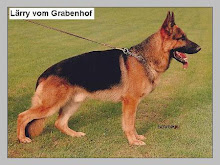Dog Training: The Right Type Of Communication Needed For Dog Training Success
The most crucial factor that can spell the difference between success and failure in training your dog is attitude – both yours and your dog’s. While your family dog may have some pretty serious difficulties, your dog’s right attitude toward training will help overcome even his most intolerable behavior. However, control of your dog’s attitude rests entirely with you!
You need to mold your dog into the family member you want him to be – where obedience and instant response will allow a relationship for you and your pet that is free from stress and frustration.
This article will deal only with training dogs between six months of age and older. There is a difference in training techniques when teaching a dog below the age of six months, and that age group will require methods specifically intended for puppies.
Teaching a six-month-old dog with kindergarten methods would be an insult to his intelligence, much like a college student would be offended if his instructor talked to him using child-like teaching techniques. Similarly, a six-year-old child would achieve nothing sitting in a classroom listening to a professor explaining the theory of relativity.
Setting Positive Attitudes While Training Your Dog
If your dog’s training periods each day consist of nothing but commands, I can assure you that a negative attitude will develop from your pet. His daily routine is now being changed to include training sessions. It is up to you, his owner, to make these training periods something that your dog will enthusiastically look forward to.
You can achieve this simply by communicating verbally with the dog during training periods. Here lies another key that will spell the difference between mediocre and excellent performance from your dog. By communicating verbally doesn’t mean the usual “Heel” and “Sit” commands. Literally talk to your dog. Say something like “Good Boy….. You’re doing a great job… Come on boy, you can do it…etc.”
Although your dog has no idea what you are saying, two things are actually taking place while you’re talking to him. First, your enthusiastic and warm tone of voice reflects your positive attitude and motivates your dog into doing a great job in order to please you.
Second, this motivation then triggers a positive attitude in your dog. Commands, on the other hand, should be given in a completely different tone of voice. They should, in fact, sound like commands, and not requests. They are then followed by enthusiastic and loving praise as soon as the dog follows the command or when shown what his correct response should have been.
Keep in mind that the most important key to the success of your dog’s training is communication. Talk to him, reflect your positive attitude in the tone of your voice and your dog will reflect his positive attitude in the excited way he welcomes each day’s training session.
Thursday, January 29, 2009
Dog Training: The Right Type Of Communication Needed For Dog Training Success
Subscribe to:
Post Comments (Atom)


No comments:
Post a Comment